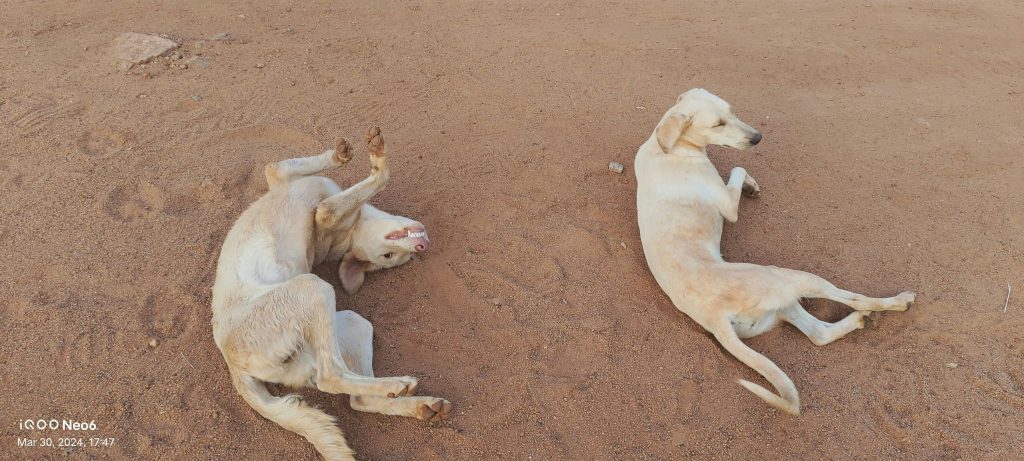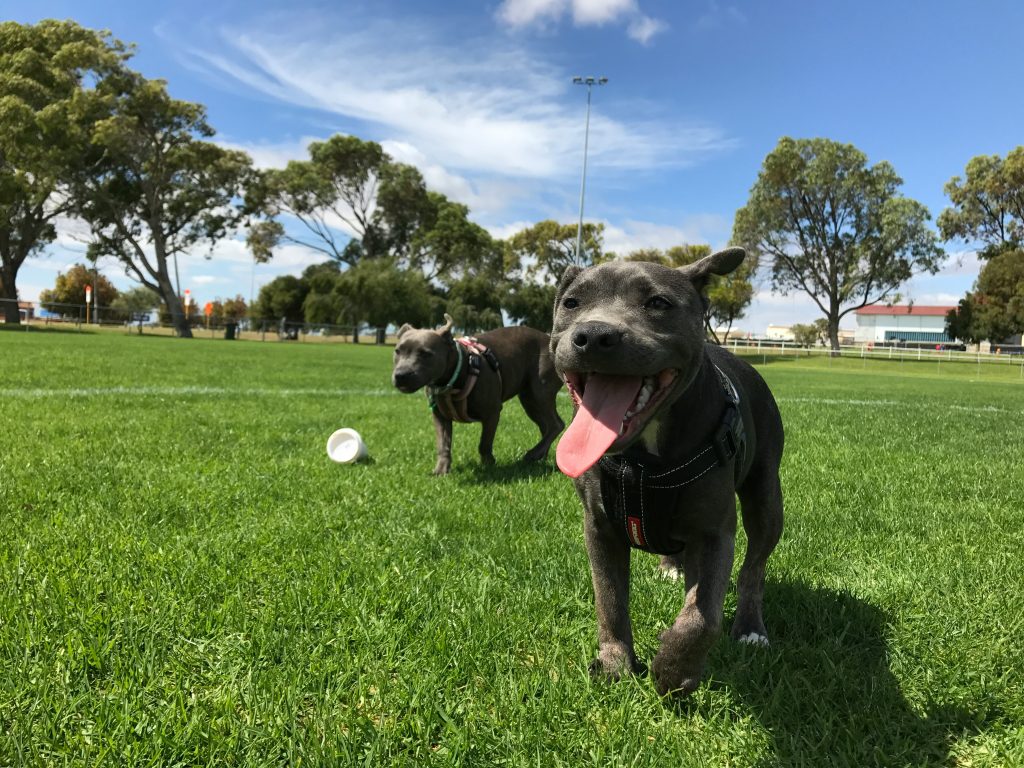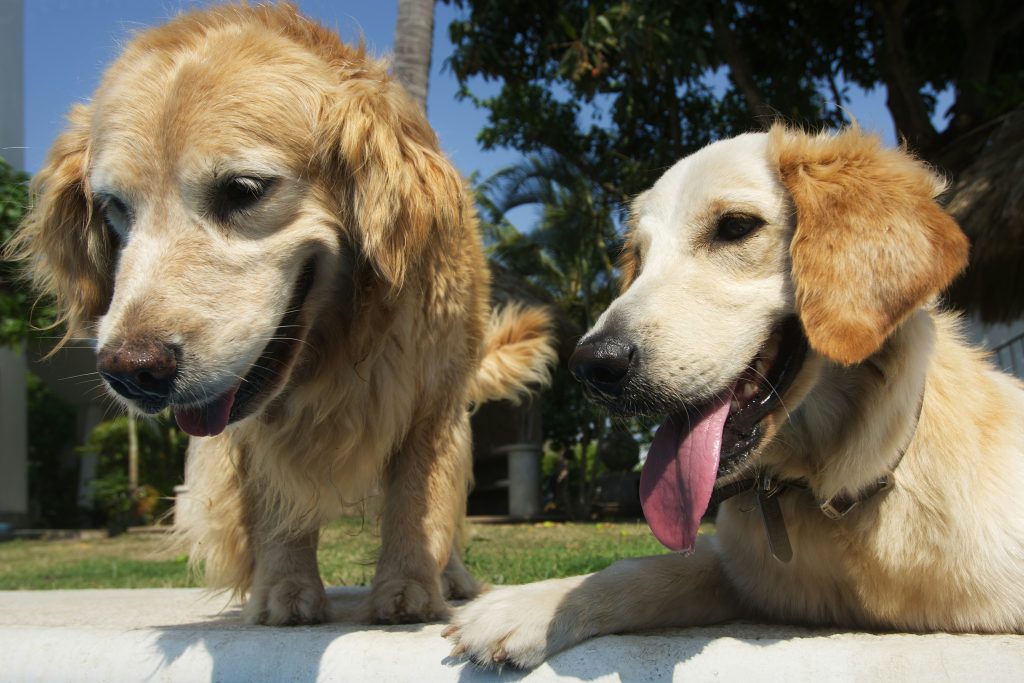Preventing Heat Stroke During Summer Walks
Summer is the perfect time to enjoy the outdoors with your dog—but hot weather comes with real risks, especially heat stroke. Walks that seem routine in cooler months can become dangerous when temperatures soar. Dogs don’t sweat like humans, and their primary cooling method—panting—isn’t always enough when the heat is intense.
In this blog, we’ll break down the best strategies for preventing heat stroke during summer walks, from choosing the right time of day to preparing your dog with the right gear and hydration.
Why Summer Walks Can Be Risky
Even when the air temperature feels tolerable to us, pavement and sidewalks can heat up to over 125°F—hot enough to burn your dog’s paw pads within seconds. Combine that with humidity, direct sun, and physical exertion, and your dog’s body temperature can climb quickly into dangerous territory.
While exercise is still important during summer, smart planning and preparation are essential to make sure your walks are safe and enjoyable for both of you.
Choose the Right Time of Day
One of the simplest and most effective ways to prevent heat stroke is to adjust your walking schedule. Avoid peak heat hours, which typically fall between 11 AM and 4 PM. Instead:
-
Walk early in the morning (before 9 AM) or later in the evening (after 6 PM).
-
Look for shaded trails or wooded parks, which stay cooler than open streets or sidewalks.
-
Check the hourly forecast for both temperature and humidity—dogs are more prone to overheating when humidity is high, even if it’s not very hot.
Do the 5-Second Pavement Test
Before heading out, do a quick pavement check:
-
Place the back of your hand on the sidewalk or street.
-
If you can’t comfortably hold it there for 5 seconds, it’s too hot for your dog’s paws.
When in doubt, stick to grassy areas, shaded trails, or bring your dog to a park where surfaces are cooler.
Bring Water and Take Breaks
Hydration is key to preventing heat stroke. Always bring fresh, cool water for your dog and a collapsible bowl on walks.
Tips to keep your dog hydrated:
-
Offer water every 10–15 minutes during a walk.
-
Avoid letting your dog drink from standing puddles or fountains that may carry bacteria.
-
Freeze a water bottle the night before and let it slowly melt during your walk to keep it cool.
In addition, allow for frequent rest breaks in shaded spots. Don’t push your dog to keep walking if they start panting heavily, slowing down, or seem reluctant.
Use Protective Gear
Investing in the right summer gear can make a big difference:
-
Dog booties or paw balm: Protect paws from hot surfaces.
-
Cooling vests or bandanas: These evaporative accessories help lower your dog’s temperature.
-
Reflective or light-colored harnesses and leashes: They absorb less heat than dark materials.
-
Portable fans or misting devices: Helpful for long hikes or dogs with breathing issues.
Be cautious with muzzles—unless designed specifically for cooling or breathable airflow, they may restrict your dog’s ability to pant.
Watch for Early Warning Signs
Heat stroke can develop rapidly, even on short walks. Know the warning signs:
-
Heavy panting or rapid breathing
-
Excessive drooling
-
Red or pale gums
-
Lethargy or slowing down
-
Wobbly walking
-
Vomiting or diarrhea
If your dog shows any of these signs, stop immediately, move to shade, offer water, and start cooling them down with cool (not cold) water on their belly, paws, and armpits. Call your vet right away.
Tailor Walks to Your Dog’s Needs
Not all dogs handle heat the same way. Consider:
-
Brachycephalic breeds (Pugs, Bulldogs): These dogs are more prone to heat stroke due to their narrow airways.
-
Seniors and overweight dogs: May fatigue faster and cool down more slowly.
-
Double-coated breeds: Like Huskies and Golden Retrievers, these dogs are better suited for cooler climates.
Shorten walk duration and reduce intensity for dogs in any of these categories. Sometimes just playing in a shaded yard or taking short indoor training walks is a safer option on hot days.
Make Walks Enriching Without Overheating
If long walks aren’t an option in the heat, here are other low-risk ways to keep your dog mentally and physically engaged:
-
Sniff walks (slow-paced strolls where your dog gets to explore and sniff)
-
Puzzle feeders or scent games at home
-
Indoor playtime with fetch or tug toys
-
Sprinkler or kiddie pool time in your backyard
Mental stimulation tires your dog out just as much as physical exercise—without the overheating risk.
Final Thoughts
Summer walks don’t have to stop—but they do require extra thought and care. By adjusting your routine, using the right equipment, and staying alert to warning signs, you can enjoy the season safely with your four-legged friend.
In the next blog, we’ll cover emergency steps to take if your dog shows signs of heat stroke—so you’re fully prepared to act fast and confidently in a crisis.



